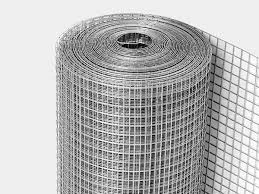Nov . 13, 2024 12:20 Back to list
rock cage retaining wall
Rock Cage Retaining Walls An Innovative Solution for Erosion Control
In the realm of civil engineering and landscape design, retaining walls serve a crucial function they provide support to vertical slopes, prevent soil erosion, and create usable flat surfaces on hilly terrains. Among various types of retaining walls, rock cage retaining walls—often referred to as gabion walls—have emerged as a highly effective and environmentally friendly solution. This article explores the features, benefits, and applications of rock cage retaining walls.
What is a Rock Cage Retaining Wall?
A rock cage retaining wall is constructed using wire mesh baskets—gabions—filled with rocks or other materials. These cages are designed to create a strong, stable structure that can retain soil and withstand natural forces, such as water runoff and seismic activity. The choice of filling material can vary, from natural stones to recycled materials, making rock cage walls a versatile option for many landscaping and engineering projects.
Benefits of Rock Cage Retaining Walls
1. Erosion Control One of the primary advantages of using rock cage retaining walls is their effectiveness in controlling erosion. The porous nature of the structure allows water to flow through, reducing hydrostatic pressure and minimizing the risk of soil displacement during heavy rains.
2. Environmental Sustainability Rock cage walls are often made from locally sourced materials, reducing the carbon footprint associated with transportation. Furthermore, their design can promote vegetation growth, as the spaces within the structure allow for plant roots to establish, providing additional stability and aesthetic value.
rock cage retaining wall

3. Flexibility and Adaptability The modular nature of gabion structures allows for various configurations and sizes, enabling engineers to customize walls to meet specific project requirements. Whether used for terraced landscaping, slope stabilization, or as decorative features in gardens, rock cage walls can adapt to diverse environments.
4. Cost-Effectiveness Compared to traditional concrete retaining walls, rock cage walls can be more economical due to the reduced need for heavy machinery and skilled labor during installation. Additionally, the durability of gabions minimizes long-term maintenance costs.
5. Aesthetic Appeal With the ability to use different types of stones and even incorporate greenery, rock cage retaining walls can enhance the visual appeal of a landscape. They can blend seamlessly into natural surroundings or serve as eye-catching design elements in urban settings.
Applications
Rock cage retaining walls find extensive applications in various scenarios. They are commonly used in highway construction to stabilize slopes, in agricultural settings for terracing, and in residential projects to create usable garden spaces. Their ability to handle water flow makes them ideal for riverbanks and lakeshores, where erosion poses a significant threat.
Conclusion
In summary, rock cage retaining walls offer a sustainable, cost-effective, and visually appealing solution for soil stabilization and erosion control. Their versatility in design and function makes them suitable for a wide range of applications, contributing to both environmental preservation and aesthetic enhancement. As the demand for innovative engineering solutions continues to rise, rock cage retaining walls stand out as a practical and efficient choice in landscape and civil engineering projects.
-
Reliable Nails for Every Construction Project
NewsJun.10,2025
-
Reliable Iron Nails for Every Project
NewsJun.10,2025
-
Razor Wire Solutions for Enhanced Security
NewsJun.10,2025
-
Hydraulic Hose Ferrule Fittings: Key to a Strong Hydraulic System
NewsJun.10,2025
-
Field Fencing: Secure Your Property with the Best Solutions
NewsJun.10,2025
-
Euro Fences: The Ultimate Choice for Security and Style
NewsJun.10,2025









